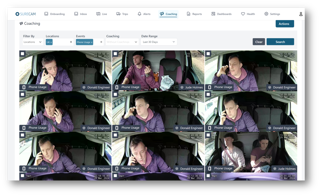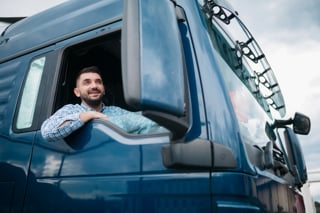Attendees
Colin Hutt,
fleet and insurance manager, CITB
Ian Jutson,
strategic fleet manager (support services),
Environment Agency
Phil Pimlott,
assistant director operational support/special operations, South Central Ambulance Service Trust
Peter Bonney, fleet controller, Salvation Army
Loretta Haddow, fleet services manager, transport provision, West Sussex County Council
Norman Harding, corporate fleet manager, London Borough of Hackney
Jon Hunt, marketing manager, Toyota and Lexus Fleet Services
Charlie Holcomb, national public sector and mobility manager, Toyota and Lexus Fleet Services
Innovative moves to improve safety can be identified in many areas of fleet operation and can have an impact on cost, emissions and utilisation.
In a roundtable discussion, sponsored by Toyota and Lexus Fleet Services, public sector fleets shared some of the ideas that had helped their organisations reduce risk, advance safety and, in many cases, help reduce costs.
What are you doing to improve fleet safety?
Norman Harding: We’ve worked on safety at a couple of levels. While most private organisations would look at the operation of vehicles, drivers and routes, at local authority level, we look at the local community and how we can influence that including the infrastructure. We regularly come together as an authority to pool our ideas. We work closely with Transport for London (TfL) trying to drive some ideas forward. We’re fortunate that in London there are 33 boroughs and an association of transport officers. We get together monthly to share ideas. Those ideas then get built upon. For example, Safe Urban Driving, which is based on the idea of getting drivers out of cabs, on to cycles, and training them with professionals, came from Hackney, Lewisham and Hammersmith.
Colin Hutt: Bikes take a different line from truck drivers and vice versa based on how they manoeuvre, so it seems a good way of giving them a different point of view.
Norman Harding: Putting a truck driver on a bicycle is difficult, but it does help them understand some of the challenges of being a cyclist in London. TfL is now promoting
a similar idea. Many of the things it takes up come from local authorities. When you’re recognised as a safe operator, you get drawn into organisations to develop similar ideas further.
Jon Hunt: We have processes where we share information and best practice between departments and management. It’s a great way of understanding each other’s challenges.
Norman Harding: At Hackney Council we offer free cycle servicing. During rush hour, mini workshops were set up and while people’s cycles were being maintained, we asked them some questions about cycling. We also have a 32-tonne truck and get them to sit in the cab so they can understand a truck driver’s perspective. We carried out some tests with the truck mirrors and a cyclist.
Ian Jutson: We’re fitting telematics and carrying out online risk assessments and combining the data to create risk profiles. With a fleet as large as ours (3,600 cars, 1,400 vans and 4,500 other assets such as pumps), you need to ensure the technology has a return on investment. In the next six months we should see the results of this. We’ve also added telematics to our plant equipment. Last winter we were very much reactive to floods with staff going all over the country and we lost track of where equipment was left. Now we can track where they are and that’s a major benefit of telematics beyond the normal safety aspects. We introduced telematics from a safety perspective and changing driver behaviour, but we’ve also been very keen to see the CO2 reduction (8-10% average) and fuel savings.
How can vehicle manufacturers respond to an appetite for telematics data?
Jon Hunt: When you have a mixed fleet of vehicles, the information can be different. It might not be consistent between vehicles or manufacturers. Some of the performance data would be down to interpretation. A hybrid car, for example, will regenerate energy to be used by the battery. Using this energy is not a fuel use, and some of the data will not take into consideration those differences. There is no standard. For us it’s the same situation as with other manufacturers. There is technology readily available to drivers in their cars in real time. (But) there isn’t the infrastructure in Europe to do it and if there’s no standard, it’s difficult to compare data.
Colin Hutt: We’re talking to telematics companies about automatic mileage capture. It stops inaccurate mileage submissions so pays for itself. There are other things telematics can do by plugging into the engine management system. It can report exceptions like warning lights or accident alerts. It is sometimes resisted by drivers because it’s too
intrusive and that puts me off a little.
Ian Jutson: We’ve got about 8,000 drivers so we’re bound to get that view where it’s seen as intrusive somewhere along the line. But we’re proposing it for safety reasons – not to catch people out for incorrect mileage. It’s about looking after each other. If our drivers are safer, then other road users are safer too. The utilisation and fuel benefits are the icing on the cake.
Loretta Haddow: My main concern is that if telematics is something that has to be monitored constantly, then it adds extra pressure to our resource.
Phil Pimlott: At the moment we’re just playing around with telematics. One of the biggest challenges we have is if an emergency vehicle is involved in an incident. On-board cameras capture the two-and-a-half minutes leading up to the incident and five minutes after. The cameras give us a 360° view. When we presented it to the unions they were all in favour and it has saved many of our drivers being prosecuted. Now we’re looking at the telematics side of it to build up a whole picture to help reduce accidents.
Norman Harding: We’ve had telematics on our vehicles for a number of years to the point where it’s no longer providing us with much useful information. The nature of our local authority area defines business mileage. We don’t have problems with speeding and our routes are cyclical, so it’s most useful if we’re involved in an accident. We’ve managed to bat off a lot of spurious insurance claims. We’re now looking at cameras.
Colin Hutt: We always advise drivers if they are involved with a rear collision to check whether there are any other passengers in the car to help ensure there are no false claims about injuries to passengers.
What are your views on safety and driver distraction?
Norman Harding: As fleet operators we have appropriate systems in place to monitor compliance. But it’s quite easy to be pushed in a particular direction by bodies like Brake and the Royal Society for the Prevention of Accidents. They do a great job, but if they’re not operating a fleet it’s very easy for them to take the moral high ground. There is evidence to show that hands-free is riskier than not using a phone, but rather than banning it there should be more education. Lots of accidents happen when reversing, but you wouldn’t ban reversing. Lots of accidents happen in car parks, but you wouldn’t ban using car parks. Police radios seem to have an exemption and they use the same technology as mobile phones. If the street is your place of work, there could be an argument to use a phone as long as it is safe and appropriate.
Jon Hunt: The anxiety of being unable to contact anyone when you’re on the road can also cause problems.
Peter Bonney: I find that an increasing number of manufacturers are now putting basic controls on a touchscreen. How dangerous is that? Maybe buttons on dashboard are no longer the things to have, but you knew where everything was. Now you have to scroll through different screens.
Ian Jutson: It’s a really valid point that knobs and switches still have their place on the dashboard. A phone button, which we shouldn’t use, is easier to reach than the button to demist the screen.
Do you get more benefit from sole supply or multiple supply deals?
Norman Harding: We use a blend of funding. Most of our heavier vehicles are purchased outright and LCVs are leased. We have three leasing suppliers. The level of discount that we achieve is off the purchase price. They factor in a number of elements around the residual value that affects our rental rate. We can offer a manufacturer a minimum of 200 vehicles to see if that’s any better than the Crown Commercial Services framework. We have our own in-house maintenance. Sometimes we need to use dealer support, but it can be costly in terms of service support, time delays and feeding back information. Local dealers can end up treating you like a retail customer.
Loretta Haddow: I find that if you don’t take maintenance as part of the contract hire package, dealers aren’t really interested in any ongoing support. Next time we procure vehicles, we’ll look at dealers who are much more local. For warranty work, we’re having to take them several miles to the nearest dealer. Dealers won’t build in a collection arrangement because they’re not getting any benefit.
Ian Jutson: Our maintenance is outsourced. We have parameters that identify the most efficient location for maintenance to take place. It takes account of utilisation and can remap where vehicles are going for the appropriate service. A more dynamic servicing element should make savings.
Colin Hutt: With cars it might not be as easy to benefit from bulk deals. At least with sole supply leasing, they have SLAs with partners such as dealers and can lean them.
Peter Bonney: If you’ve got your own appointed suppliers, when things go wrong, they help you out.





















Login to comment
Comments
No comments have been made yet.